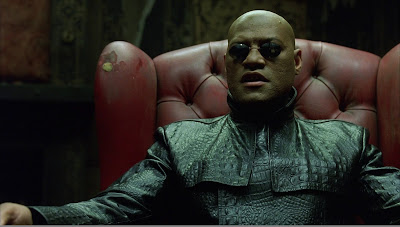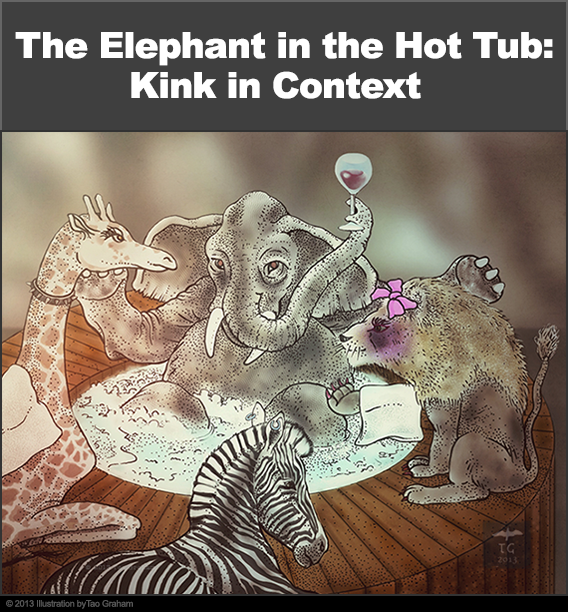 |
Mobius offers two pills, in The Matrix (1999): Can a cure for PTSD be achieved by MDMA?
Perhaps that is a matter of the client’s choice! |
After 130 years of systematic talk therapy a broad variety of psychotherapies has arisen. Some have been shown to work well, others show little promise, and many new ones have not been rigorously tested. A friend of mine who just returned from Boulder, Colorado, raved about his experience there using experimental MDMA-assisted psychotherapy for his Post-Traumatic Stress Disorder. If I had been asked in advance, I would not have immediately recommended experimental therapy with professionally administered doses of the recreational drug ecstasy, especially for anyone with a strong recreational drug history. It has only been a few weeks since he completed the protocol, but he is much relieved. There is strong basis for thinking that massive pharmacological intervention on serotonin, norepinephrine and oxytocin systems that regulate anxiety, depression, and attachment might impact PTSD, but this is far from proven with MDMA. So it is not as if he is looking under the wrong rock. But with thousands of different psychotherapy techniques, how to evaluate them could be a pressing question if you might be in the market for a therapist.
 |
Hans Eyesenk( 1916-97) He was a famous critic of psychotherapy
Nevertheless, psychotherapy has been very extensively tested and it usually works. |
The answer to that question about how to evaluate them is: vigorously and frequently, and it’s a lot harder than you might think! Even by the 1990’s, over a thousand studies had been conducted which collectively demonstrated that psychotherapy works. Not infallibly, or for every imaginable purpose, but for the average patient, there is a very strong probability that there will be at least moderate symptom relief. The problems in this happy research picture are two-fold. First, not everyone is helped, and there is only weak evidence that more therapy is better. If 10 sessions are good, it does not follow that 100 sessions will be ten times better. Almost all types of psychotherapy are good. Back in the 1960’s Hans Eyesenk, an important critic of psychotherapy, was able to show that untrained counselors were as effective as seasoned professionals in brief psychotherapies! While there is an emerging consensus that cognitive behavioral therapy is best, and it has the advantage of being time limited, and therefore less expensive, it is also true that the data for its superiority are eroding, and that some clients are not helped by it at all. So research offers a murky picture about which kind of therapy might be best, and no research has been conducted focusing specifically for therapy on kinky and polyamorous clients.
It is beyond the scope of this blog to advise readers about the best psychotherapy types. This is just as well, most practitioners have already made that choice, or had training and marketplace determine this for them. Although we have critical comments to make about psychoanalysis, cognitive behavioral, or sex addiction therapies here, it violates one of our core values to tell readers which psychotherapy to choose. One of the reasons is that such advice violates the principle of being ’client-centered.’
Client-centered therapy puts the welfare of the client first, but by philosophy and legal regulation, all therapies are supposed to do this, so it is a legitimate question, what behaviors and techniques differentiate client-centered therapies from others? After all, all are supposed to benefit the client. My argument is that client-centered therapies do not differ from others in their goals, but in crucial aspects of process. In client-centered therapy:
It is the client, not the therapist who is, moment-to-moment in the therapy, responsible for the therapeutic goals, and
the therapy relies on the client’s insight, rather than on the therapist’s direction and advice, for its primary effects.
 |
| Socially necessary but not client-centered! |
The therapist is an agent of the client, rather than other social forces. In reality, no therapist is able to avoid some social accountability to other agencies when conducting therapy. But accepting any more accountability than necessary risks making a therapist an agent of social control, rather than an agent of the patient. Some therapies and some therapeutic situations force modifications in this:
Court-ordered therapy for matters like intimate partner violence or non-consensual sexual behaviors are, by definition, unable to be client-centered. These therapies are accountable to external agencies.
Therapies with minors require the consent of parents, and may be considered accountable to those paying the fee, rather than to the child. Most child-practitioners have careful procedures to deal with the inevitable problems that arise when the best interest of the child and parents come into conflict.
Couples and family therapies where the interventions are aimed at the dyad or family system, and no therapeutic participants’ interests can be ethically subordinated to those of any other by the therapist. In some polyamory cases, this can become quite complicated in complex polycules, particularly where some members come in for therapy and others do not.
Client-centered therapy is an idealized case, in which no other interest interferes with the client’s welfare. But psychotherapy is a regulated profession and child abuse and neglect reporting laws, duty-to-warn laws, institutional context, and insurance coverage can all limit the therapist’s practices in placing the client first in the therapy exclusive of all other considerations.
Finally, humans are, by evolutionary design, creatures of internal conflict. While therapists are skilled at not getting drawn in to these conflicts, it is an idealized fiction to think that there is always a neutral middle ground when a client wars within about which conflicting interests will be primary. Therapists are humans too and a good faith effort at engaged neutrality does admit to differing interpretations.
Despite these considerations, therapies and therapists do vary in how they place the responsibility for therapeutic change on the client. Given the long history of therapeutic mistakes in trying to help people change their sexual variations, client-centeredness is a strong protection against therapy inadvertently becoming just one more place where the pervasive social stigmatization of sex and variation gets done.
 |
| Carl Rogers (1902-1987) American Psychologist and father of client-centered psychotherapy technique |
The original use of the term ‘client-centered therapy’ was devised by Carl Rogers. Rogers is a towering figure in the history of psychotherapy. He pioneered university student counseling centers. He is rightly seen as a father of humanistic psychology, the human potential movement, and self-help psychology. Forgive for a moment the fact that the term ‘self’, which is in profligate currency today was not nearly so popular when he did his work, and its use in this blog has really not been set up and defined. Suffice it to say that in the late 1800’s when psychology was getting formally organized as an academic discipline, there was no such term in clinical currency. Sigmund Freud, who regarded our conscious notions of ourselves as highly suspect manifestations of internal conflicts over frightening and often immoral unconscious impulses, was at great pains to avoid using any term in his model of the mind that assigned explanatory power to the patients’ conscious ideas about themselves or their condition. And one of the great insights to be derived from the study of modern social psychology is just how systematically distorted and unreliable our conscious self-representations tend to be.
 |
| “Mirror mirror on the wall…” Self-image is not always very accurate! |
There are countless examples: anorexics think they are fat; fat people think they are thinner than they are. We believe we are more independently-minded than we are when we really act like a herd. We say we will vote one way, then do something else at the polls, if we even vote at all. We live in an internal Lake Woebegonewhere the pies are tastier, the kids are all above average, and our own errors look minor in comparison to the same errors committed by others. We are fearful of and more averse to loss than we admit to ourselves, often paying excessive costs to avoid having to accept inevitable losses. Our perception of risk is extremely distorted, we fear air travel more than extensive commutes, jihadists more than bathtubs, and think attractive sexual partners are less likely to carry STIs than less glamorous ones. All of this until we become depressed, at which point our view of the external world becomes more realistic at the expense of self-vilification. These insights and more await the serious student of social psychology, yet we revere Carl Rogers for his founding work in humanistic psychology — all built on the foundation of the self.
 |
| Otto Rank (1884-1939) A psychoanalyst who worked closely with Freud, but later broke with him over how emotions were handled in Freud’s theories. He was an important influence on Carl Rogers. |
Rogers studied under Otto Rank, who for 20 pivotal years between the 1900’s and mid-twenties, served as Sigmund Freud’s right-hand man and as secretary to the newly founded International Psychoanalytic Association. In 1924, Rank wrote “Trauma of Birth” to address two perceived weaknesses in Freud’s theories. The first, was over-emphasis on the explanatory power of the Oedipus complex, and the other was the lack of a here-and-now language for emotions. Rank thought Freud’s theory was too abstract and not grounded enough in the language of clients. Rogers was especially concerned about this latter weakness in psychoanalysis, and compensated for the highly elaborate theory of psychoanalysis with being grounded in the present in consultation with his patients.
Despite all the examples I provided about the flaws in our self-conceptions, the idea of self was at the center of Rogers’s theory. After Freud, he was among the most influential clinicians of the twentieth century, and his approach was much more grounded in the American cultural experience than Freud’s. Roger’s felt that whatever misconceptions clients might have acquired about themselves, the clinician could gain enough insight to be helpful by staying empathetically grounded in the session, by being supportive, striving to accurately reflect back the emotionality of what the patient was saying.
Rogers also came to believe that unconditional positive regard for the client was an essential part of the healing experience. While Freud argued that neutrality was important in therapy, and spoke of positive and negative transference feelings as grist for the mill of therapeutic work, Rogers insisted that the counter-transference be kept positive. There has been great intellectual debate about whether such positive feelings are curative in and of themselves, or whether they are even realistically possible at all. One can practice in a client-centered way without suspending all judgment about the client. But Freud would have seen this as a dangerous loophole in the therapeutic contract when the analyst’s feelings were in danger of biasing the clinical conception of the client.
 |
| An Emerald Tree Boa. Nothing to be afraid of! |
The benefits of unconditional positive regard, rather than excessive identification with or sympathy for the client, or of too much neutrality, is that it promotes an emotional state with the fewest possible barriers to empathizing with the client’s experience of their narrative in treatment. If Rogers was correct that this is crucial for effective therapeutic interventions, the therapist’s theoretical sophistication, training, accountability to professional peers, and such must not serve as barriers to understanding the client’s emotional world. One does not need a snake phobia to treat a client with a fear of snakes, but not only must the therapists not be too afraid of snakes to sit still listening to the client’s hair-raising tales of snake horror, but so too must not take flight into the very reasonable scientific insight that non-poisonous snakes are rarely harmful and that poisonous ones are rarely encountered. Anyone who has treated a phobic client knows how unhelpful it is to make the cognitive behaviorally accurate observation that such feared objects are rarely genuinely dangerous, and certainly not proportionately dangerous to phobic levels of terror. Indeed, such clients have repeatedly been told that snakes can’t hurt them, and present for treatment with their phobia’s undiminished despite all the good advice.
 |
Alas, this classic Gary Larson cartoon is not just characteristic of canines.
It applies all too well to us. |
These problems of fighting off the client’s difficult feelings are particularly serious when treating kink because one of the distinguishing characteristics of kink ethos is to embrace the very feelings that conventional people fear. Ugliness, aggression, apparent violence, pain, power imbalance, bondage, slavery, anxiety, gender role blurring and reversal, sexual objectification, even ‘evil’ are sometimes ‘played’ with in kink, and they often do not have the same meanings in kink that they have in the larger society. For example, with a kinky client might talk about undergoing a sundance ritual in which they are painfully partially suspended by hooks inserted in their pectorals. Just listening to their description would require tolerance for fears of such intense feeling. But while you can imagine what intense feeling you would have in that situation, you might find the feelings your client has are very different indeed. Even another person who went through that ritual – even one who is kinky in a different way, may find they have fundamentally different reasons than those driving your client! In client-centered therapy, it will be important for you to identify and empathize with their meaning over your own. (Indeed, this is one of my reasons for arguing that a therapist need not be kinky to treat kinky clients. Not only is kink so diverse, a kinky therapist is not going to be able to enjoy the wide diversity of activities the way their entire caseload will, but their embrace of any single activity may or may not be all that similar to the enthusiasm of a client with similar preferences.
The therapist also needs to be tolerant of ambivalent feelings, and to be careful to not prematurely take sides in a client’s conflict about whether they love or hate such intense experiences. In the past, therapists have often made the mistake of interpreting the conventional side of such ambivalence as ‘healthy’ and the kinky side as ‘pathological’. Even where such ambivalence is directly identified by the client as a key part of the therapeutic contract that is driving the treatment, it is premature and unwise to arrive at such a judgment without fully empathizing with the client’s feelings about multiple sides of the conflict, and allowing the client to arrive at their own conclusions about how such ambivalence can be tolerated or resolved.
It has been gently argued in this blog that the unifying dimension of most BDSM activity is power exchange, although no single dynamic is universal to all participants. The essence of client-centered therapy is, following the sage advice of Vigorito and Braun-Harvey, protecting the client from casual exercise of the inherent professional powers of the therapist. The social conventions of therapy rely on the context of professional services: we seek counsel with an expert in some technical specialty in which we lack knowledge or detached objectivity. This empowers our doctor, lawyer, or financial advisor to tell us things we cannot know directly. But flawed individual clients, in conflict about the meanings and consequences of their own behavior, bring to psychotherapy a rich history of past experiences and an inner world in which we therapists lack the special knowledge base that tax lawyers and orthodontists have. Our special process expertise, which the vast majority of our clients lack, and our capacity for detachment — which is conventionally valued, but brings special challenges as well as observational power and perspective — may or may not work to advantage in an intimate therapeutic situation. We can know about all those risks of self-reflection I have cited from social psychology, but clients seeking our expertise come in a vulnerable position of power imbalance. We exaggerate that vulnerability by assuming conventional assumptions that we are the experts.
 |
Indiana Jones: “Snakes! Why does it always have to be snakes?”
Actually, Indy, Cobras are fairly dangerous.
From Raiders of the Lost Ark (1981) |
As in the previous example of the ophidiophobe who was not cured by all manner of mundane assurances that snakes aren’t all that dangerous, somehow, all the ‘good’ rewards cues, norms and incentives of conventionality have not rendered our client’s kinks irrelevant and depleted them of meaning or satisfaction. Many clients present in therapy after having experienced powerful social sanctions for their kinks. They imagine that they would be better school board members, aunts, sex partners, or athletes without these temptations. Perhaps they have already lost jobs, friends, lovers, or harmonious relations with their families because of them. So we risk repeating the same old mistakes conventionality makes if we cannot understand why those conventions did not work for our clients.
Sometimes therapy is just the place for the power exchange a client may crave, in which they get to be neither tops nor bottoms, but fully co-equal participants. For a few, this may be therapeutic in and of itself, but at minimum it is a novelty that they must explain to themselves, and this may hold out methods for applying insight that can undergird genuine life changes. All that is impossible if we collude with society or the client in pretending that we are powerful experts with special knowledge that the client lacks and they need to submit to our advice.
One of the discomforts that our refusal to cloak ourselves in traditional professional power dynamics may hold for the client is that, frightened, anguished and confused about the conflicts in their life, our confrontation of the wish for the security of having someone more ‘qualified’ to do the work for them feels abandoning and scary. After all, if we do not know more than they do, why are they paying us a large fee? When they go to the orthopedic surgeon, they do not expect the surgeon to ask for their uninformed opinion about whether joint replacement is needed. Actually, better professionals of all stripes do actively draw the client into contracting for treatment and take care that treatment decisions are informed and made on a participatory basis, rather than coming down as professional diktats. In psychotherapy, like BDSM play, consent based on mutual communication needs to be alive moment-to-moment in the treatment, and that makes the client more directly responsible for the treatment than many people are used to experiencing. Seasoned members of BDSM communities and poly relationships may be very sophisticated about this from the moment they arrive for treatment. Clients with low social skills, poor affective control, and who are bringing lots of social isolation and/or romantic idealization to treatment are likely to be much less comfortable with the implications of client-centered technique. Client-centered therapists are experienced at confronting the dynamic in which clients come in, flop down in the consultation chair and say “fix me!”
Likewise, client’s may experience hopelessness that, after long and painful confrontation from some bind in their lives that touches on their kink, that they will achieve new insight in therapy that has eluded them in social discussion and private introspection. Partly, this hopelessness is a reflection of just how distorted we can all be as mirrors for ourselves, and how difficult it can be to reexamine our own assumptions with fresh eyes. But it can also be hard for clients who have experienced social stigma outside the therapy not to anticipate it from within, and it is not uncommon for Kink Aware Professionals to hear stories of other therapies that lend credence to such feelings. But being deeply listened too and reflecting together on how one talks about one’s inner experience often does lead to new insight, and can lead to supporting behavioral changes that are based on that new knowledge. In all cases, the feeling of being understood and accepted that client-centered techniques promote bolsters the likelihood that such insights will be transformative, not just intellectualizations that fail to change.
For Rogers. many of the most deepening and powerful insights were promoted by verbal reflection of the client by the therapist. He is the father of applied active listening techniques. And this lead to a powerful and ironic social experiment that still resonates today in the world of ‘artificial intelligence’.
Back in 1964, the famous computer scientist Joseph Wiesenbaum invented a computer program called ELIZA, after George Bernard Shaw’s flower girl protagonist who language professor Henry Higgins contrives to pass off as an aristocrat on the basis of reforming her language, dress and deportment alone. Following the guidance of Alan Turing’s famous test that an artificial intelligence would be ‘real’ if it was indistinguishable from human communication, Wiesenbaum contrived to build a simple program to implement active listening technique by simple implementation of syntax rules.
 |
Audrey Hepburn as Eliza Doolittle in My Fair Lady.
Getting Audrey Hepburn to pass doesn’t seem that challenging, in retrospect! |
ELIZA would analyze the typed sentences of the human participant for key words, and then frame queries that repeated those key words. Often this felt like a deepening of the conversation, as ELIZA appeared interested in the most significant and affect-laden words.
ELIZA: How are you today, Russell?
client: I feel bad. It has been a hard week!
ELIZA: A hard week?
Client: Yes, I’m very anxious about the upcoming exam.
ELIZA: Can you say more about the exam?
Client: Yeah, the last one was quite difficult and I only did OK on it. It is really important that I do well in this test.
ELIZA: Tell me more about the test?.
The program was not capable of rendering interpretations, so long conversations could, at times, become circular. At no point would it break in and suggest the I might manage my test anxiety with well-tested self-calming techniques, an intervention that any good cognitive behavioral therapist would eventually suggest when they felt they had a pretty good handle on why I was stressed enough about the test to devote this attention to it in session.
The ELIZA program raises significant questions about how we know we are understood and what empathy really means, but there is no question that back in the 1960’s when computing power was very limited and programs needed to be very simple, the observed fact was that people who played around with ELIZA often marveled at how ‘real’ and deep their conversations felt. For comparison purposes, the reader is referred to my previous coverage of bots and the Ashley Madison site’s exploitation of men looking for affairs with married women Romantic Idealization and Betrayal and The Epistemology of Lies.
The reader may wish to experience Eliza directly at the following site:
You will find ELIZA is easy to trick, and do not expect much if you try to draw her into a conversation about the Turing Test. Like the hoary old joke about the dancing bear, the miracle is not in her fancy footwork, but that she appears to be dancing at all.
Client-centered therapy and unconditional positive regard, to be effective, need to be more than automatic reflexive mirroring. The example that the behaviors of active listening and unconditional positive regard can be aped by a computer program is another example in a long string of stories on this blog that behavior has limited intrinsic meaning and that its context is crucial in the interpretation of a behavior’s significance. But it is also true that, for clients who do not understand themselves fully and expect others to be judging and dismissive, genuine empathy re-contexts how they listen to themselves, and makes them look at their insights about themselves in new ways. And in that sense, a therapist can practice any psychotherapeutic orientation more effectively by advising less, reflecting more, suspending moral judgment and promoting articulation from the client about all of the client’s different perspectives on the problems brought them to treatment.
© Russell J Stambaugh, March 2016, Ann Arbor MI, All rights reserved























